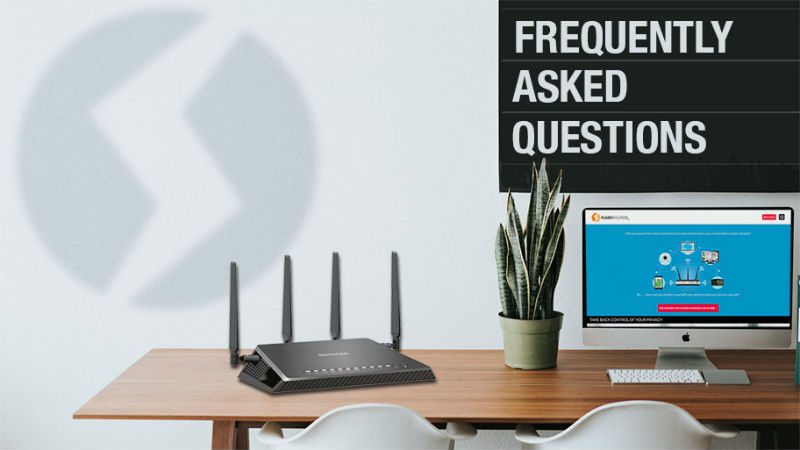In today’s fast-paced and highly connected world, having a reliable internet connection has become more important than ever before. To make the most of your online experience, you need a device that can keep up with your demands. A wireless router is a type of networking device that allows you to connect to the internet.

It enables multiple devices, such as computers, smartphones, tablets, and gaming consoles, to connect to the internet wirelessly, providing you with the flexibility and freedom to access the online world from virtually anywhere in your home or office. In this article, we’ll help you understand the basics of what a wireless router is, how it works, and why it is an essential component of your home or office network.
What Is a Router?
Yes, that thing you’ve owned forever—that box-shaped device sitting hidden on a shelf or entertainment center. Yes, that thing that allows you to access Facebook and Instagram. What is it exactly?
‘What is a Router?’ is a more difficult question than it initially seems. Even expert router techs are hard-pressed to come up with a succinct answer for your average user. Cloudflare provides the following definition,
“A router is a device that connects two or more packet-switched networks or subnetworks. It serves two primary functions: managing traffic between these networks by forwarding data packets to their intended IP addresses, and allowing multiple devices to use the same Internet connection.”
Most often routers enable connection to the Internet, the mother of all networks. Routers can be directly and physically connected to your computer but are lately much more reliant on wireless connections.
How Does a Wireless Router Work?
Wireless routers work by transmitting data over radio waves, which are picked up by devices capable of receiving wireless internet signals, such as laptops, tablets, smartphones, and other wireless-enabled devices within range. The router broadcasts its signal using its antennas and can be configured with a unique network name and password to ensure security.
They allow for seamless internet connectivity without the hassle of having to run wires throughout your home or business, making them essential devices for modern homes and workplaces. The router also assigns each device connected to it an IP address, so that data can travel to and from the correct device.
Wireless routers typically operate on a specific frequency or channel, allowing multiple routers to exist in the same area without interfering with each other. Additionally, many routers have security features such as WPA3 encryption or MAC address filtering to ensure that only authorized devices can connect to the network.
What Is The Difference Between a Modem And a Wireless Router?
Routers do not directly connect you to the Internet, which is why you need a modem, short for “modulator-demodulator.” Usually, this is a device provided to your by your Internet Service Provider (ISP). Your ISP provides a network infrastructure that allows your devices to access the internet. However, your router and the ISP communicate using different radio signals. That’s why you can’t just plug your router into your ISP’s network and get internet access.
The modem acts as a mediator or translator between your router and the internet. The modem takes the digital signals that your devices send and translates them into analog signals. Usually, it connects to your Internet Service Provider through a coaxial cable (if it’s a cable modem), telephone line (if it’s a DSL modem), or optical fiber.
What Are The Best Wireless Routers?
These wireless solutions will take your router to the next level.
NordLynx WiFi 6 Router – Privacy Hero

$249.99
- Perfect for Medium Homes
- Perfect for 20-30 Devices
AX3000 WiFi 6 VPN FlashRouter

$149.99
- Perfect for Medium Homes
- Perfect for 20-30 Devices
Asus RT-BE88U WiFi 7 Merlin FlashRouter

$599.99
- Upgraded with Custom Merlin Firmware.
- Next Gen WiFI 7 Update of Asus favorite model.
Understanding Router-Related Concepts
Now that we’ve explained what a router is, it’s important to figure out a few networking concepts that are relevant to understanding how a router works.
What is LAN?
LAN, which stands for Local Area Network, is a group of interconnected devices, such as computers, printers, and servers, located within a small geographical area, typically in the same building. LANs are commonly used in homes, schools, and businesses, to share resources and information among the connected devices. LANs can be wired or wireless and can utilize different networking protocols to transfer data between devices.
What is WAN?
WAN, which stands for Wide Area Network, is a type of network that covers a large geographic area, such as a city, country, or even the entire world. WANs allow different networks to communicate with each other, using a combination of wired and wireless technologies, such as satellite links, fiber optic cables, and routers. WANs are commonly used by businesses and organizations to connect their different branches or offices located in different cities or even different countries, allowing them to communicate and share resources. WANs can be expensive to set up and maintain, making them less common in homes and small businesses.
What Are Wireless Bands?
Wireless bands refer to the frequency ranges used by wireless devices to transmit information without the need for cables or wires. Currently, the two most popular wireless bands are 2.4 GHz and 5 GHz.
The 2.4 GHz band has been in use for a long time and is a popular choice for many households and businesses. The 5 GHz band, while able to support faster speeds than the 2.4 GHz band, has a much lower range.
More recently, users can now access the 6 GHz wireless band. This ultra-fast wireless band offers users an even faster connection. However, not all devices currently support this band.

Wired Vs Wireless Connectivity?
Wired and wireless connectivity are two ways to establish a connection between devices and the internet. Wired router connection performance is generally more stable and reliable than wireless router connection performance.
Wired connections that use Ethernet cables offer better data transfer rates than wireless connections. They are also more secure, as hackers and malicious actors need direct physical access to your router to do harm.
However, wired connections can be limiting in terms of flexibility since they require a physical connection. Most wireless routers offer four or fewer ethernet ports, which severely limits how many devices you can connect simultaneously. In addition, for people with larger homes using an ethernet connection may be impractical, as their router and their device may be on completely opposite sites.
On the other hand, wireless router connections are more flexible as they allow you to connect to your broadband without needing a physical connection.
What Do Wireless Standards Mean?
Wi-Fi standards play an important role in wireless connectivity. The most common standards are Wi-Fi 5 and Wi-Fi 6, which offer significant improvements in speed, capacity, and efficiency over previous versions. The newly developed Wi-Fi 6E standards provide even better performance by reducing congestion in areas where many devices are connected at the same time.
What Is The Difference Between a Wireless Router and a Wireless Access Point?
A wireless access point is a device that extends the range of an existing wireless network but does not perform any of the functions performed by a wireless router. It connects wirelessly to an existing router and allows multiple devices in a specific area to connect wirelessly to the same network. In short, a wireless router is an all-in-one device that combines the functions of a router, switch, and access point, while a wireless access point is just one component of a larger network.
What Is The Difference Between a Wireless Router and a Switch?
Unlike a wireless router, a switch is a networking device that connects devices within a local area network (LAN). It uses Ethernet cables to create a wired network. Switches have multiple ports, and they are used to connect multiple devices, such as computers, printers, and servers together in a single network. In conclusion, while a wireless router provides wireless connectivity to multiple devices, a switch enables wired connections between multiple devices within a local area network.

Getting The Best Out Of Your Wireless Router
To get the most out of your wireless router, there are a few things you can do. First, consider the placement of your router. A central location in your home or office can help ensure the best Wi-Fi signals throughout your space. Preferably, the device is not surrounded by objects that can interfere with the signal, making it difficult to have a stable connection. If you have a large home or office, you may want to consider a mesh network or an extender to boost the signal in hard-to-reach areas.
It’s also important to ensure that your router is secure and has a strong password to keep your home or office network safe from hackers. Using a secure connection protocol like WPA3 can minimize the possibility of issues. Depending on where you live, you can also hide your SSID, to minimize the possibility of someone trying to hack your network.
Depending on your Wi-Fi networking device, it may come pre-loaded with features like parental controls, bandwidth monitoring, and device management. These features make it easy to monitor if someone is trying to access your home network and prevent them from wreaking havoc.
Lastly, regularly updating your router’s firmware can ensure it’s running smoothly and providing the best performance possible. By following these tips, you can maximize the potential of your wireless router.
Should I Upgrade My Router?
Upgrading your existing router is a question that only you can answer. If your current router is providing you with everything that you need in terms of data transfer speeds, range, and reliability, then there may not be much need to upgrade. However, if your router is not functioning at an optimal level or if you have noticed some connectivity issues, it might be time to consider upgrading to a newer model.
Older routers may not be able to able the newest streaming devices or the number of simultaneous connections your network has. In addition, many new routers come with built-in features like parental controls, bandwidth monitoring, and other features to protect your network.
Look for a newer router that provides better speed, improved coverage, and additional features such as enhanced security options. Ultimately, the decision to upgrade will depend on your specific needs and budget, but investing in a new router can definitely help you achieve faster and more reliable internet speeds.




